|
Stirling Mk.IV
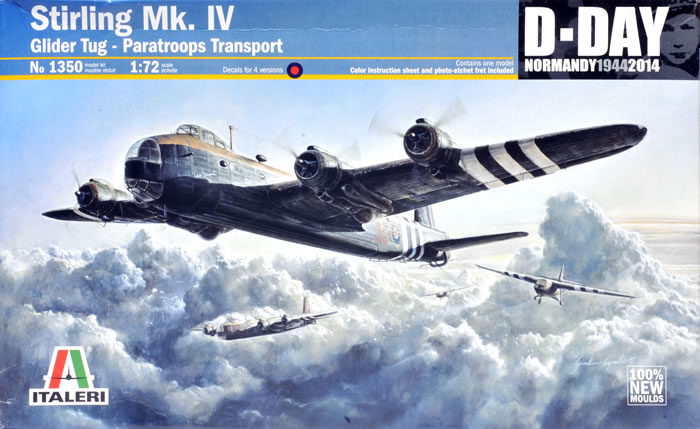
Italeri, 1/72 scale
S
u m m a r y |
| Catalogue Number: |
Italeri Kit No. 1350 –Stirling Mk.IV |
| Scale: |
1/72 |
| Contents and Media: |
233 parts in grey plastic; 24 parts in clear; 41 pieces on a single photo-etched fret; markings for four aircraft on one decal sheet; instruction booklet. |
| Price: |
From GBP £39.99 plus shipping available online from Hannants |
| Review Type: |
FirstLook |
| Advantages: |
Well moulded; high levels of detail throughout; a welcome subject. |
| Disadvantages: |
Heavy surface detail; very flat tyres. |
| Conclusion: |
There’s a lot to like about this kit. For a start, it’s a Stirling. The overall level of detail is very good, decals are well produced, engineering is sensible and the use of photo-etched parts is appropriate; but the heavy surface detail is exasperating. |
Reviewed by Brett Green

Eduard's 1/48 scale Spitfire Mk.IXc Weekend Edition is available online from Squadron.com
The Short Stirling was the first four-engine British heavy bomber of the Second World War.
The Stirling was designed by Short Brothers to meet an Air Ministry specification from 1936. When the preferred design from Supermarine had to be abandoned, the Stirling was ordered for the RAF. It entered service in early 1941 but had a relatively brief operational career as a bomber, being relegated to second line duties from late 1943, when other more capable four-engine RAF bombers, specifically the Handley Page Halifax and Avro Lancaster, took over the strategic bombing of Germany.
The Stirling was used for mining German port areas; while later variants fulfilled a major role as glider tug and supply aircraft during the Allied invasion of Europe in 1944–1945.

In late 1943, 143 Mk.III bombers were rebuilt to the new Mk.IV series specification (without nose and dorsal turrets), for towing gliders and dropping paratroops, as well as 461 Mk.IVs built from new. These were used in the Battle of Normandy and Operation Market Garden.
Stirlings were also used in Operation Glimmer on 6 June 1944 for the precision-laying of patterns of "window" (later known as "chaff") to produce radar images of a decoy invasion fleet.
From late 1944, 160 of the special Mk.V transport variant were built, which had the tail turret removed and a new opening nose added, most of these being completed after the war. *
It has been a long time between Stirling kits. There has never been a 1/48 scale injection moulded kit of this landmark bomber; and the sole 1/72 scale example is the venerable Airfix B.Mk.I/III, which has been with us since the mid 1960s. That model is showing really its age.
Italeri has chosen the glider tug Mk.IV to kick off its brand new Stirling family.
Under the evocative box art, Italeri’s 1/72 scale Stirling Mk.IV comprises 233 parts in grey plastic, 24 parts in clear, 41 pieces on a single photo-etched fret, markings for four aircraft on one decal sheet plus an instruction booklet.
Interior detail is very good. The cockpit includes seats and photo-etched harness straps. The instrument panel is a sandwich of the base plastic, decal dials and a photo-etched front panel. Throttle and pitch handles are separate photo-etched parts too.
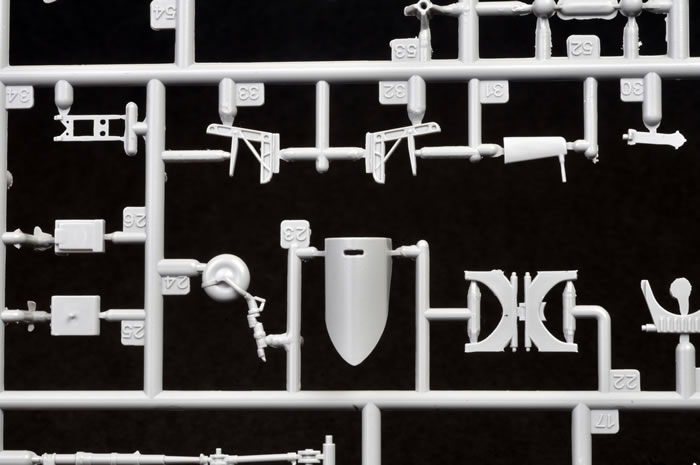
Floors and bulkheads feature nice structural detail, and the radios, navigator’s table (complete with a set square) and heater ducting are also included.
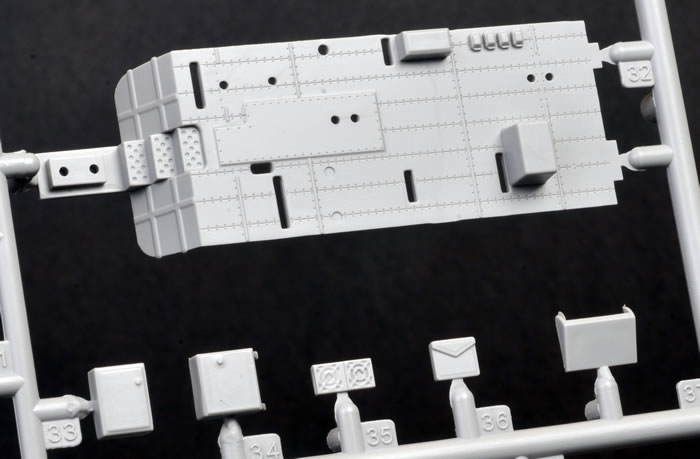
Structural detail is also moulded to the length of the interior fuselage sidewalls.
An optional clear part is offered for a curved front window for the nose.
The rear fuselage is fitted with packs, oxygen bottle, bulkhead with a folded curtain and even includes a chemical toilet!
The crew entry door is a separate part and may be posed open or closed. Fuselage and wing bomb bay doors are separate too, but bombs are not supplied for this version.
Engines are broken down simply but the should look good inside the nacelles. The support struts are supplied in photo-etch. Photo-etched parts are also used to supplement detail in the rear turret. Cowl flaps are moulded open.
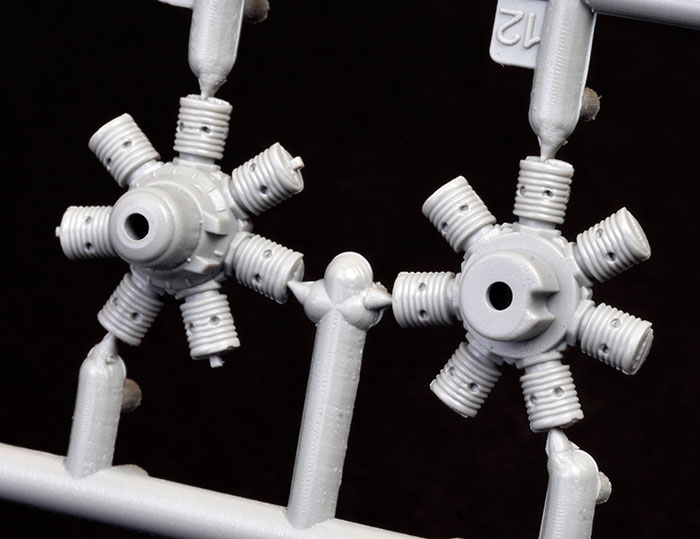
Control surfaces are all moulded separately and may be posed according to taste.
Wheel wells are bare but the undercarriage legs look good. The tyres are not so much bulged as melted, with excessively large flat spots.

Surface detail is recessed and very heavy. Just about the kindest thing that can be said is that it is not as heavy as the preceding Italeri Sunderland. Even so, in my opinion, the panel lines and the rivets are too wide, too deep and too profuse for a 1/72 scale kit. It is hard to understand why we are seeing this deep, almost die-cast treatment on some kits, as Italeri has shown that it is perfectly capable of delivering very crisp fine detail. Take a look at the 1/48 scale Hurricane kit for a recent example of restrained surface texture from Italeri.
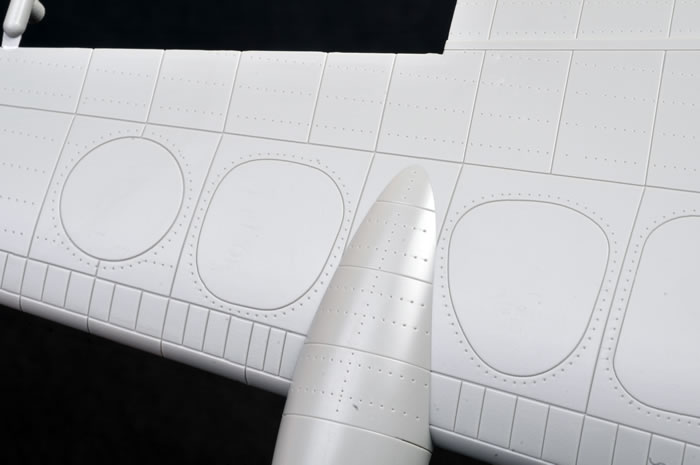
Fabric detail on the control surfaces is better.
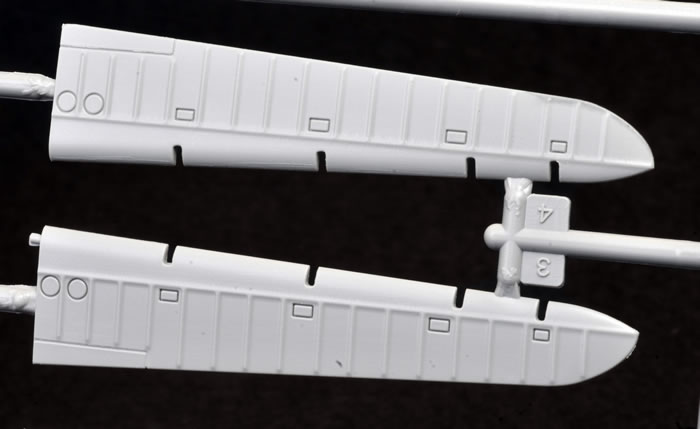
Clear parts look good on the sprues and should look even better on the model.
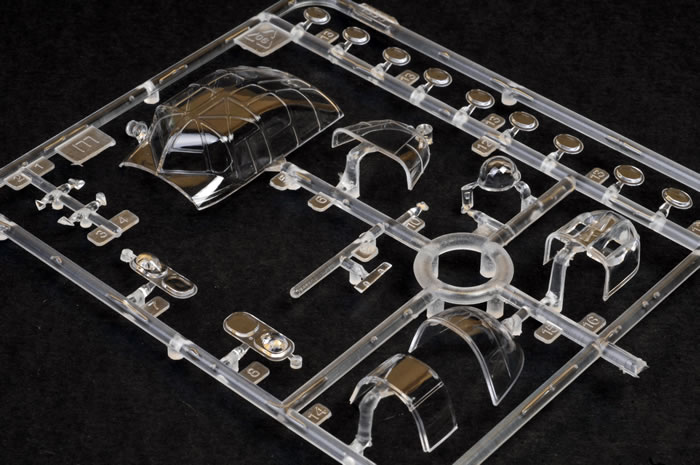
Parts breakdown is logical with conventional fuselage halves, upper and lower wing halves, locating pins and tabs. Sprue attachment points are quite fine too.
Decals are printed by Cartograf.
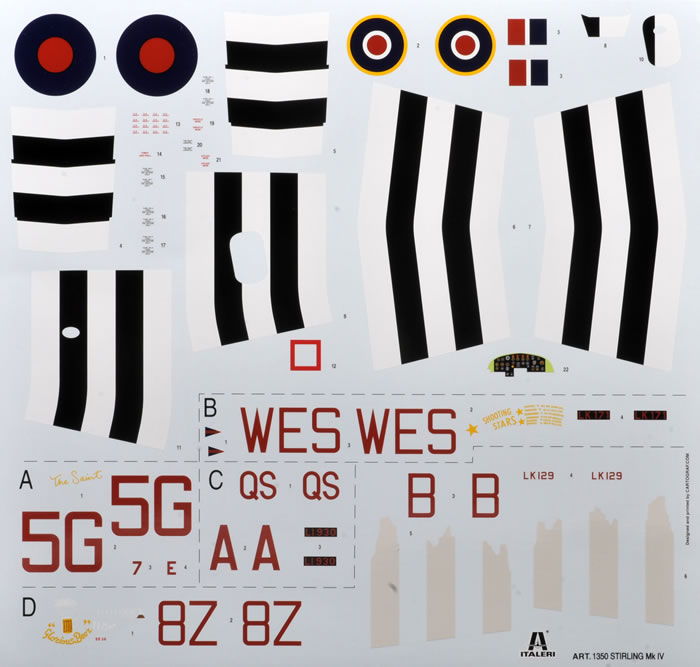
They are high gloss and in good register, but I am a bit suspicious about the proportions of the upper wing B Type roundels (the red looks too big to me).
Invasion stripes are also supplied in decal form – handy for those who don't like to paint them.
There’s a lot to like about this kit. For a start, it’s a Stirling. The overall level of detail is very good, decals are well produced, engineering is sensible and the use of photo-etched parts is appropriate.
Some won’t like the heavy surface detail (I know that I don’t), but it can probably be tamed with Mr Surfacer or even a few heavy coats of primer followed by brisk sanding. That worked pretty well on my Revell Spitfire recently!
It would be nice if we didn’t have to do this extra body work, but the model is otherwise a very sound basis for a well-detailed 1/72 scale Short Stirling.
* Historical text adapted from Wikipedia http://en.wikipedia.org/wiki/Short_Stirling
Thanks to The Hobby Company Limited for the sample.
Review Text and Images Copyright © 2015 by Brett Green
Page Created 13 January, 2015
Last updated
14 January, 2015
Back to HyperScale Main Page
Back to Reviews Page |
